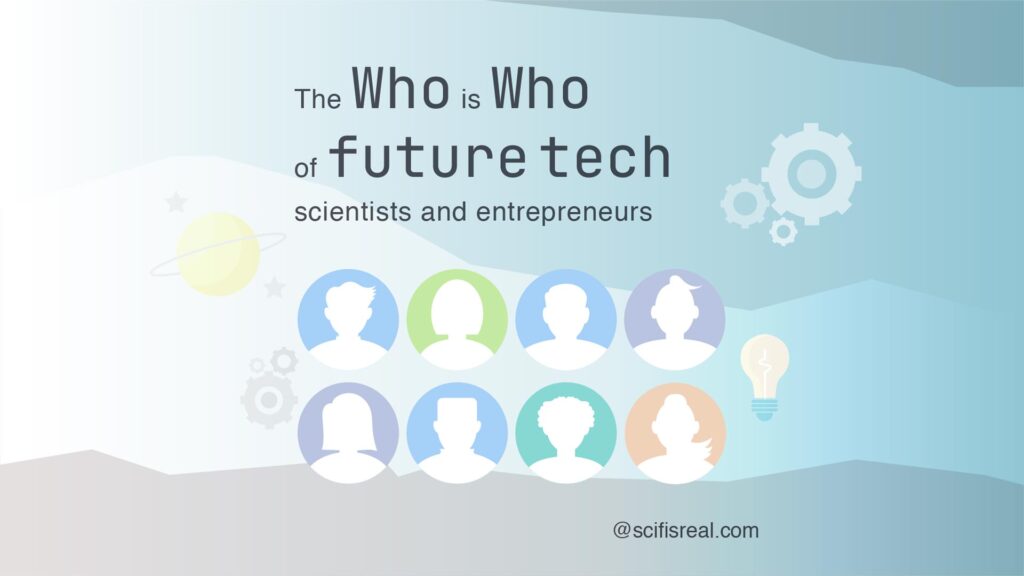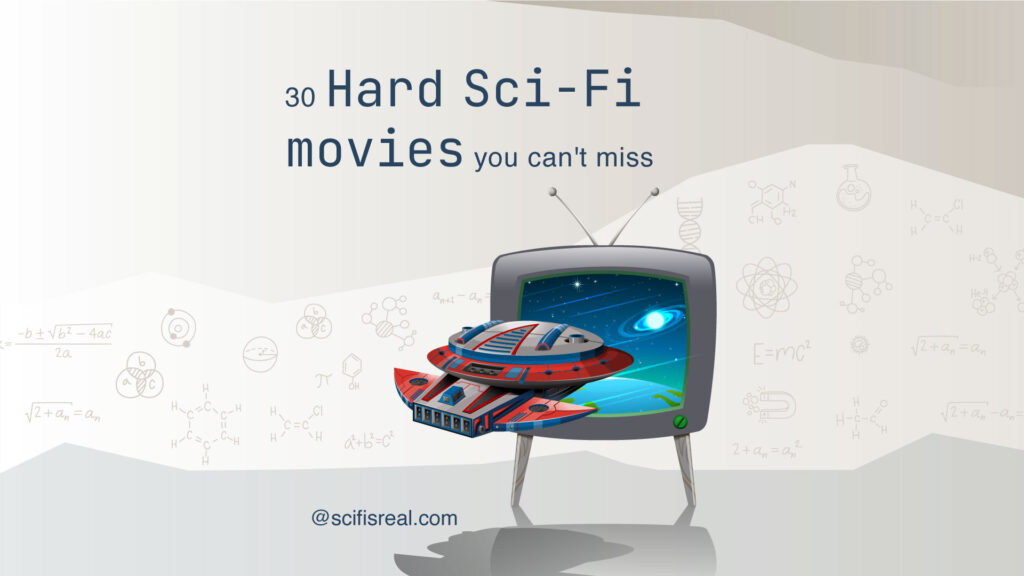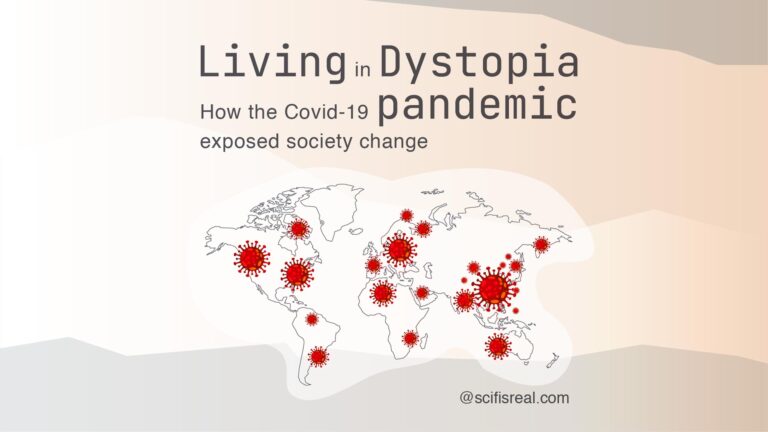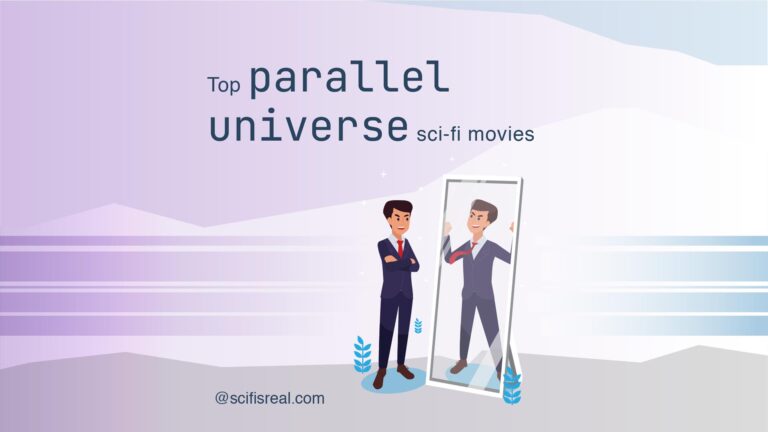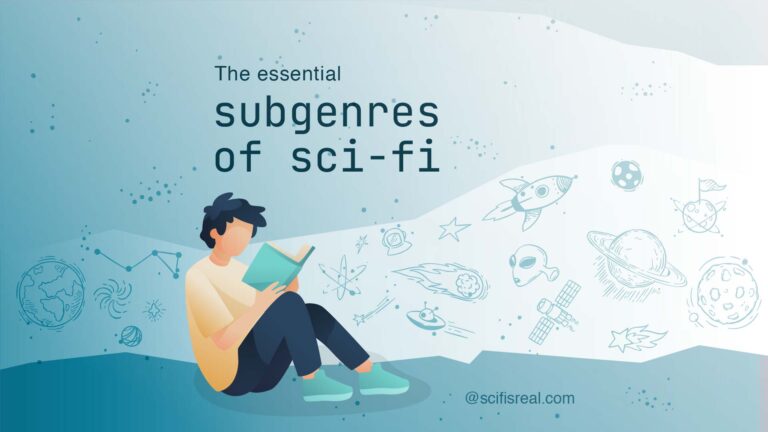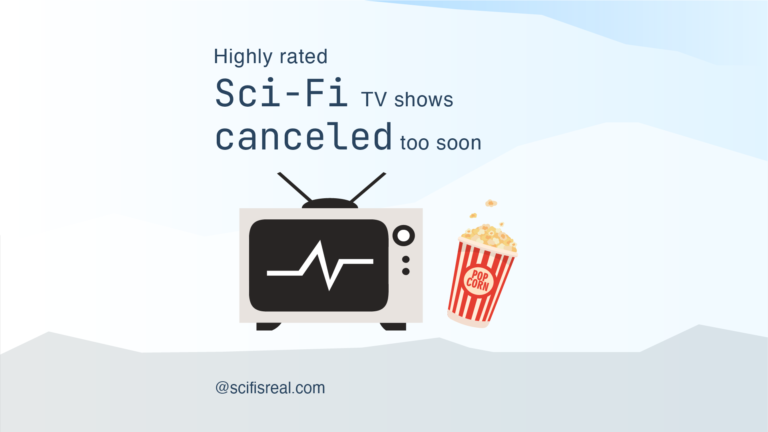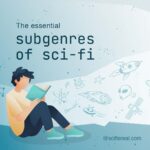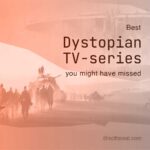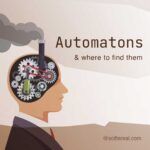Best science fiction books written by actual scientists
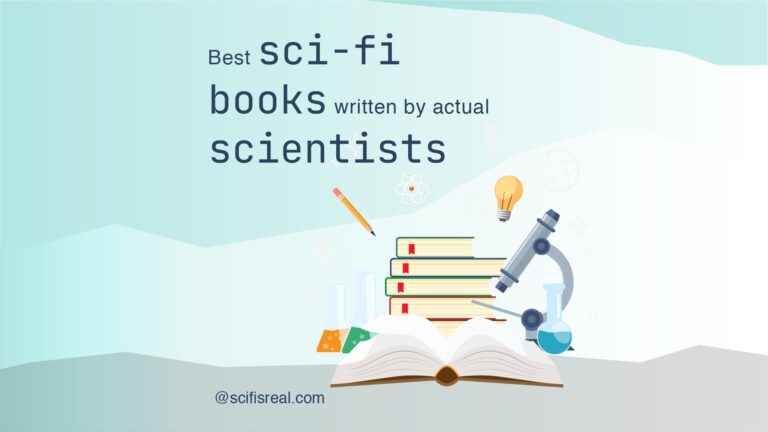
It’s not difficult to see why scientists are drawn to science fiction as a form of expression in their books. It allows them to explore their own ideas in a creative way that can sometimes lead to real-world applications. As technology continues to develop, scientists will continue to draw inspiration from science fiction in order to push the boundaries of what’s possible.
Many of the stories, ideas, and technologies found in science fiction books are based on scientific theories and discoveries. While many of these concepts may seem far-fetched or impossible today, they often become reality as technology advances. It’s not uncommon for scientists to draw inspiration from sci-fi works when researching new theories or inventions. And sometimes, real scientists become science fiction writers themselves. Science fiction has long been an avenue for scientists to express their creativity and imagination.
Who are the most well-known scientists that also wrote science fiction?
There are many science fiction authors who were also scientists in real life. These authors use their scientific knowledge to create stories that are both imaginative and plausible. Some of the most notable science fiction authors who were also scientists include:
Isaac Asimov
Asimov was a biochemist and professor of biochemistry at Boston University. He is most famous for his Foundation series, which explores the concept of psychohistory, a fictional field of science that predicts the future behavior of large groups of people. Isaac Assimov’s best science-based sci-fi story is arguably I, Robot.
Arthur C. Clarke
Clarke was a British inventor and scientist who is best known for his novel 2001: A Space Odyssey. He was also an early advocate of the idea of using satellites for communication.
2001: A Space Odyssey by Arthur C. Clarke
2001: A Space Odyssey is “the story of a journey to the Moon and how humanity’s exploration of space changed its course forever.” The novel follows a crew of astronauts and scientists as they attempt to discover the origin of an enigmatic monolith found on the Moon. Along the way, they encounter a powerful alien intelligence that forces them to confront the nature of their existence. The story examines themes including space exploration, technology, evolution, consciousness, and human destiny.
Greg Bear
Bear is a physicist and science fiction author who is known for his novels Blood Music and Eon. His works often feature complex scientific theories as well as social commentary. He has also written several non-fiction books about science and technology.
Eon by Greg Bear
Eon is a science fiction novel set in the near future where humanity must confront an alien menace that has been dormant for eons. The story follows a group of scientists, soldiers, and diplomats as they attempt to negotiate with the aliens and discover their purpose before it’s too late. Along the way, they uncover dark secrets about the nature of reality and the universe. The novel examines themes including science, technology, politics, and faith.
Peter Watts
Watts is a biologist and science fiction writer. His novels often explore themes of scientific progress and the consequences of technology. He is best known for his novel Blindsight, which explores the implications of technological singularity.
Blindsight by Peter Watts
Blindsight is a science fiction novel set in the distant future, where humanity has encountered an intelligent alien race. The story follows a group of scientists and soldiers as they attempt to make contact with the aliens and discover their purpose. Along the way, they must confront the implications of technological singularity and a rapidly changing universe.
H.G. Wells
Wells was a British author who is often referred to as the “father of science fiction.” In addition to writing classic works like The Time Machine and War of the Worlds, Wells was also a scientist and teacher. He wrote extensively on the topics of biology, physics, and economics. His most well-known science fiction book that shows his background as a scientist is The Island of Doctor Moreau.
The Island of Doctor Moreau by H.G.Wells
The Island of Doctor Moreau is a classic science fiction novel by H.G. Wells that follows the story of Edward Prendick, who is shipwrecked on an island inhabited by bizarre and dangerous creatures. He soon discovers that these creatures were created through vivisection experiments by a mad scientist named Doctor Moreau, who is trying to transform animals into humanoid creatures. Prendick must find a way to escape the island and its horrors before it’s too late. This classic work of science fiction explores themes of morality, human cruelty, and the power of science.
S.B. Divya
S.B. Divya is an engineer and science fiction writer. Her works, including the novella Runtime, often explore themes of technology, artificial intelligence, and post-humanity. She is a prominent advocate for hard science fiction—a sub-genre of science fiction that focuses on scientific accuracy and realism.
Runtime by S.B Divya
Runtime is a hard science fiction novella that follows the story of two space travelers who must complete a mission to save a distant planet. Along the way, they encounter dangerous alien life forms and artificial intelligence that challenge their understanding of technology and humanity’s place in the universe. The story examines themes including AI, technology, exploration, and the consequences of progress.
Jules Verne
Jules Verne was a French novelist who is best known for his adventure stories, including Around the World in Eighty Days and Twenty Thousand Leagues Under the Sea. His real profession, however, was engineering—he was a civil engineer and worked in the fields of geology, cartography, and hydrology. He was also a visionary who predicted many technological advances, such as submarines and space travel. Jules Verne’s best hard science fiction novel was “From the Earth to the Moon”, which explored the idea of a space mission launched from Florida.
From the Earth to the Moon by Jules Verne
The story follows the Baltimore Gun Club, a group of Civil War veterans who take up rocket science as a new hobby. After years of toil and trial, they devise a plan to launch three men in a projectile from Florida to the moon. The crew embarks on an incredible journey filled with danger and excitement as they attempt to become the first people to reach the lunar surface. Along their way, they encounter storms, asteroids, and even a lunar volcano. The book is a thrilling ride that details the technical aspects of space travel in great detail as well as provides insights into the human experience of exploration.
Carl Sagan
Sagan was an American astronomer who wrote several books about science and technology, including the classic science fiction novel Contact. He was also a passionate advocate for science education and popularized astronomy through his television series Cosmos.
Contact by Carl Sagan
Contact is a 1985 science fiction novel by Carl Sagan. It tells the story of Dr. Eleanor “Ellie” Arroway, an astronomer who discovers a signal from an extraterrestrial source that contains information about the nature and origin of life in the universe. She then embarks on a journey to find out what the message means and where it came from. Along the way, she discovers secrets about the universe that challenge her views on science and faith. Contact has since become a classic of the genre and won both Hugo and Nebula awards for best novel.
Andy Weir
Andy Weir is an American author who wrote the critically acclaimed novel The Martian. Before becoming a full-time writer, he was an engineer and web developer. His science fiction book The Martian explored the idea of humans surviving on Mars by using a blend of science and engineering principles.
The Martian by Andy Weir
The story follows astronaut Mark Watney who is left behind on Mars after a dust storm forces his crew to abandon the mission. With limited supplies, Watney must use his engineering skills and scientific knowledge to survive in the harsh Martian environment. He embarks on an incredible journey filled with obstacles and triumphs as he attempts to make contact with Earth and find a way home. Weir’s book is a gripping tale of survival and exploration that realistically depicts the struggles of living in an alien world.
Michael Crichton
Crichton obtained a medical degree from Harvard University and later became a successful writer, best known for his novels Jurassic Park and Sphere. His books often involve scientific concepts and mishaps, and he was known for his attention to scientific detail. His most well-known science fiction novel is The Andromeda Strain.
The Andromeda Strain by Michael Crichton
The Andromeda Strain is a 1968 science fiction novel by Michael Crichton. It tells the story of a deadly extraterrestrial microorganism discovered in the Arizona desert that takes over an entire town, killing nearly everyone it comes into contact with. A team of scientists must use their knowledge and technology to contain the organism before it spreads beyond their control. The novel is an exciting blend of science and adventure, as the scientists race against time to save humanity from annihilation. It was adapted into a feature film in 1971.
Greg Egan
Egan is an Australian writer who has a degree in mathematics and worked as a computer programmer before becoming a full-time writer. His novels often explore the implications of advanced scientific theories and concepts, such as quantum mechanics and artificial intelligence. He is best known for his novel Diaspora, which explores the idea of virtual reality and simulated societies.
Diaspora by Greg Egan
Diaspora is a 1997 science fiction novel by Greg Egan. In the distant future, humanity lives in an expansive and diverse virtual reality known as the Diaspora. Two factions emerge in this new environment: one that believes that life should be lived without limitations, and another that seeks to impose order on the chaos of existence. The story follows the main character, Yatima, as he struggles to choose between these two sides and ultimately must make a decision that will shape the future of humanity. The novel is a thought-provoking exploration of technology and its implications for life in the future.
Yoon Ha Lee
Lee is a Korean-American author who holds a degree in mathematics. He is best known for his Machineries of Empire series, which blends science fiction and fantasy elements to create an expansive universe filled with complex characters and captivating stories. The books explore themes such as artificial intelligence and the origin of life in the universe.
Machineries of Empire series by Yoon Ha Lee
The Machineries of Empire series is a science fiction and fantasy trilogy written by Yoon Ha Lee. The story follows the exiled Prince Revenant, who is on a quest to restore his family’s honor while uncovering the secret history of their world. Along the way, he discovers an ancient alien technology that could either save or destroy his civilization. The series is a thrilling adventure that combines elements of science fiction, fantasy, and philosophy to explore concepts such as artificial intelligence, quantum mechanics, and space exploration.
Sylvain Neuvel
Sylvain Neuvel is a French-Canadian author with a PhD in linguistics, who has written numerous science fiction novels and short stories. His writing often involves complex scientific concepts, and his books are known for their gripping narrative style. One of his most popular works is the Themis Files Trilogy, which consists of Sleeping Giants, Waking Gods, and Only Human.
The Sleeping Giants by Sylvain Neuvel
Sleeping Giants (Themis Files, book 1) follows the story of Rose, a girl who discovers a mysterious metal hand buried beneath the ground. As she and her team uncover more pieces of what they dub the “giant”, they soon realize that this is an alien technology with potentially world-altering implications. With the help of international forces, Rose and her team must piece together what the giant is and how to use it correctly before it falls into the wrong hands. The trilogy is a thrilling and thought-provoking exploration of scientific advancement, morality, and the consequences of our actions.
John Gribbin
John Gribbin is a British physicist and science writer who has written many books about topics such as black holes, quantum physics, and the search for extraterrestrial life. He has also authored several science fiction novels.
The Timeswitch by John Gribbin
The Timeswitch is a science fiction novel by John Gribbin. It follows the story of Rebecca, an 20th century astrophysicist who discovers a strange alien device known as a “timeswitch”. With this device, she is able to travel back and forth in time, visiting alternate realities and discovering secrets that could change the course of human history. The novel is a captivating exploration of time travel and its implications for the future, as well as a thrilling adventure that will keep readers hooked until the very end.
James Tiptree Jr.
Tiptree was a pseudonym for Alice Sheldon, an American author, and psychologist who wrote dozens of science fiction stories. Her works often explore the implications of gender roles in society and are known for their vivid descriptions of alien worlds. James Tiptree Jr. best science fiction novel is The Starry Rift.
The Starry Rift by James Tiptree Jr.
In The Starry Rift, a 1986 science fiction novel by James Tiptree Jr., an alien race called the Pompolites has invaded Earth in search of new technology and resources. A group of human scientists, led by Dr. Adrienne Gentry, must fight to protect the planet against these extraterrestrial aggressors. Along the way, Dr. Gentry and her team uncover secrets about the Pompolites’ true intentions and they must rely on their intelligence, intuition, and courage in order to save humanity from destruction.
S.L. Huang
Huang is an American author who holds a degree in mathematics from MIT and has worked as a firearms instructor. Her science fiction stories often explore themes of technology, artificial intelligence, and identity. She has also written a series of novels based on the Marvel character Quantum and Woody. Her work has won multiple awards, including the Nebula Award for her novella “The Moment of the Storm.”
Zero Sum Game (Cas Russell Book 1) by S.L. Huang
Zero Sum Game is the first book in S.L. Huang’s Cas Russell series. It follows the story of Cas Russell, a mathematics prodigy who has been hired by a mysterious organization to help solve crimes they deem too difficult for conventional law enforcement agencies. But as she begins to uncover more about her clients, she discovers that their motivations may not be as noble as they seem. With her unique set of skills, Cas must navigate the treacherous world of criminal organizations, using her intellect and quick reflexes to stay one step ahead.
Scientists as science fiction authors
These authors demonstrate that science fiction can be both entertaining and educational, providing a platform for exploring complex scientific ideas in an accessible way. By incorporating their scientific knowledge into their writing, they have created stories that are not only entertaining but also intellectually stimulating.
Scientist authors, have helped to shape the genre of science fiction and have made significant contributions to their respective fields of science. Their works continue to inspire generations of readers to imagine a world beyond our current reality.
